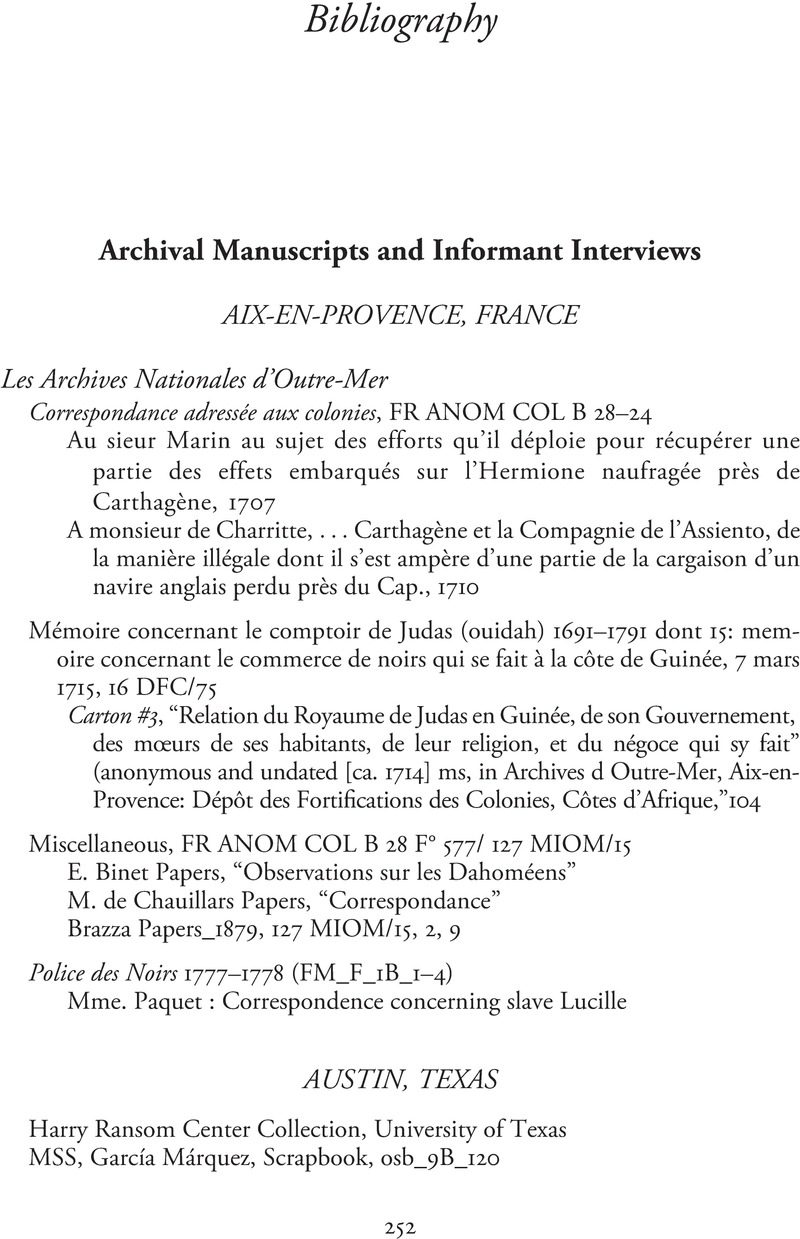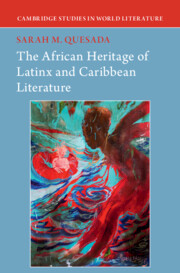Book contents
- The African Heritage of Latinx and Caribbean Literature
- Cambridge Studies in World Literature
- The African Heritage of Latinx and Caribbean Literature
- Copyright page
- Contents
- Illustrations
- Acknowledgments
- Introduction Textual Memorials of a Latin-African Literature
- Chapter 1 Fear
- Chapter 2 Commodification
- Chapter 3 Obliteration
- Chapter 4 Archival Distortion
- Coda
- Notes
- Bibliography
- Index
- References
Bibliography
Published online by Cambridge University Press: 14 July 2022
- The African Heritage of Latinx and Caribbean Literature
- Cambridge Studies in World Literature
- The African Heritage of Latinx and Caribbean Literature
- Copyright page
- Contents
- Illustrations
- Acknowledgments
- Introduction Textual Memorials of a Latin-African Literature
- Chapter 1 Fear
- Chapter 2 Commodification
- Chapter 3 Obliteration
- Chapter 4 Archival Distortion
- Coda
- Notes
- Bibliography
- Index
- References
Summary

- Type
- Chapter
- Information
- The African Heritage of Latinx and Caribbean Literature , pp. 252 - 279Publisher: Cambridge University PressPrint publication year: 2022



